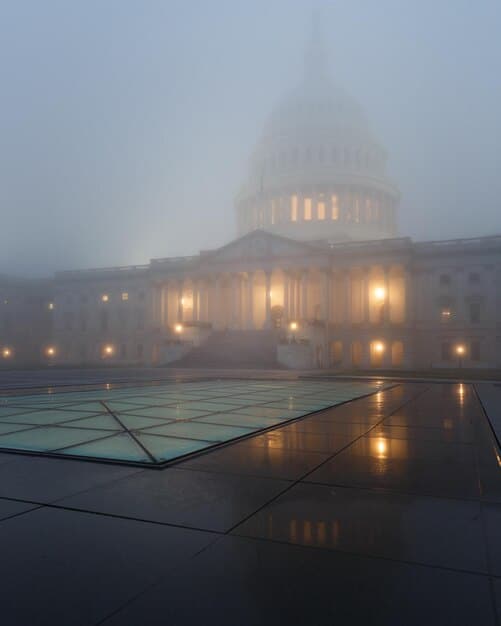IPCC Report’s 2025 Impact on US Climate Policy & Regulations

The latest Intergovernmental Panel on Climate Change (IPCC) report significantly influences United States policy and regulations by providing crucial scientific evidence that underscores the urgency for stronger climate action and informs legislative and regulatory frameworks for greenhouse gas emissions and adaptation strategies.
The intricate nexus between global scientific consensus on climate change and national policy frameworks is perpetually evolving. A pivotal determinant in this dynamic is the Intergovernmental Panel on Climate Change (IPCC), whose periodic assessment reports serve as comprehensive scientific benchmarks. Understanding how the latest IPCC Report on Climate Change affects US policy and regulations in 2025 requires a deep dive into the report’s findings, the American political landscape, and the practical mechanisms through which science translates into governance.
The Scientific Bedrock: Key Findings of the Latest IPCC Report
The IPCC, established by the United Nations Environment Programme (UNEP) and the World Meteorological Organization (WMO), provides objective and comprehensive scientific information on climate change. Its reports are not prescriptive; instead, they serve as a critical scientific foundation upon which policymakers worldwide can base their decisions. The most recent assessment cycle has delivered a stark picture of accelerated warming, emphasizing the urgency of mitigation and adaptation efforts.
These reports consolidate findings from thousands of peer-reviewed scientific papers, representing the collaborative effort of hundreds of scientists globally. They detail observed climate changes, project future scenarios based on various emissions pathways, and assess the impacts and vulnerabilities across sectors and regions.
Deepening Understanding of Climate Tipping Points
One of the most concerning aspects highlighted in recent IPCC reports is the increased understanding of climate tipping points. These are critical thresholds where a small perturbation could lead to significant, often irreversible, changes in the climate system. The implications of nearing or crossing these points are profound for global stability and human well-being.
- Accelerated warming rates: Data indicates that warming is occurring faster than previously projected, pushing the planet closer to critical thresholds sooner.
- Irreversible changes: Certain changes, such as the melting of major ice sheets or permafrost thaw, are increasingly likely to become irreversible within decades.
- Cascading impacts: Exceeding one tipping point can trigger others, leading to complex and unpredictable planetary responses.
Such findings serve as a stark warning, compelling nations like the US to re-evaluate the pace and ambition of their climate actions. The scientific certainty articulated in these reports leaves little room for doubt regarding the necessity of immediate and decisive policy responses.
The report’s emphasis on the need for rapid and deep greenhouse gas emissions reductions across all sectors underscores a fundamental shift required globally. It also highlights the disproportionate impacts of climate change on vulnerable communities, reinforcing the call for equitable climate policies.
Translating Science into Policy: Mechanisms in the US Context
The journey from an IPCC report finding to a tangible US policy or regulation is complex, involving multiple governmental branches, political considerations, and stakeholder engagement. While the US is a signatory to international climate agreements, domestic policy implementation is primarily shaped by its unique political and legal frameworks.
The executive branch, particularly the Environmental Protection Agency (EPA) and other federal agencies, plays a significant role in rulemaking. However, legislative action from Congress is often required for broader policy shifts, significant funding allocations, or statutory changes. Judicial review also ensures adherence to legal precedents and constitutional principles.
Role of Executive Orders and Agency Rulemaking
In the absence of comprehensive legislative action, US presidents have often relied on executive orders and agency directives to advance climate agendas. These mechanisms can be powerful but are also subject to political shifts and legal challenges. For instance, the EPA has authority under the Clean Air Act to regulate greenhouse gas emissions, a power reinforced by Supreme Court decisions.
- EPA’s regulatory authority: The agency possesses the power to set emissions standards for power plants, vehicles, and industrial sources.
- Department of Energy (DOE) initiatives: The DOE can implement programs promoting renewable energy, energy efficiency, and technological innovation.
- Department of Interior (DOI) conservation efforts: The DOI manages public lands and waters, addressing climate impacts through conservation and resource management policies.
The efficacy of these directives hinges on legal standing and the political will of successive administrations. In 2025, considering the ongoing political dynamics, the reliance on such tools may continue to be a significant pathway for climate action, especially if gridlock persists in Congress.
Moreover, the incorporation of IPCC findings into the National Climate Assessment, a quadrennial report mandated by Congress, directly informs federal planning and decision-making. This institutionalized process ensures that the latest science becomes integrated into governmental practices across various departments and agencies.
Anticipated Policy Shifts in 2025: Sectoral Implications
Based on the trajectory implied by the latest IPCC report and current US climate ambitions, several key sectors are likely to experience notable policy and regulatory adjustments in 2025. These shifts will aim to accelerate decarbonization efforts and enhance resilience to climate impacts.
The transportation sector, a major contributor to greenhouse gas emissions, is a prime candidate for stricter regulations. This includes the possibility of more ambitious vehicle emissions standards and incentives for electric vehicle adoption, building on existing federal and state programs.
Energy Transition and Infrastructure
The energy sector, particularly electricity generation, is undergoing a profound transformation. IPCC reports consistently emphasize the need for a rapid transition away from fossil fuels to renewable energy sources. This could translate into:
- Renewable energy mandates: States and potentially federal agencies could implement or strengthen requirements for utilities to source a certain percentage of their electricity from renewables.
- Grid modernization investments: Funding and regulatory frameworks for upgrading grid infrastructure to handle increased intermittent renewable energy and improve resilience.
- Carbon capture, utilization, and storage (CCUS): Continued development and deployment of CCUS technologies, albeit with scrutiny on their long-term efficacy and environmental impact.
In addition to these, policies promoting energy efficiency in buildings and industrial processes are critical. This could involve revised building codes, tax credits for efficiency upgrades, and performance standards for appliances. The objective is to reduce energy demand while simultaneously cleaning the supply.
Infrastructure development is also crucial, with a focus on making critical systems more resilient to extreme weather events exacerbated by climate change. This includes upgrading transportation networks, water management systems, and coastal defenses to withstand future climate impacts.

Regulatory Frameworks: Strengthening and Expanding Enforcement
Beyond broad policy direction, the detailed regulatory frameworks are where the rubber meets the road. In 2025, the US is likely to see intensified efforts to strengthen existing regulations and potentially introduce new ones, driven by the scientific imperative laid out by the IPCC.
Federal agencies, particularly the EPA, will continue to play a central role in developing and enforcing environmental standards. This includes potentially revisiting emissions limits for various industrial sectors, methane regulations for oil and gas operations, and waste management practices.
Methane Emissions and Waste Management
Methane, a potent greenhouse gas, has received significant attention in recent IPCC reports due to its high global warming potential over a shorter timeframe compared to carbon dioxide. This focus is likely to translate into stricter regulations:
- Oil and gas operations: Enhanced leak detection and repair requirements, restrictions on flaring, and capture technologies for methane emissions from wells and pipelines.
- Agriculture: Incentives and potentially regulations for reducing methane from livestock and agricultural waste, alongside sustainable farming practices.
- Landfills: Mandates for methane capture systems at landfills, converting waste into energy or reducing its atmospheric release.
These regulations are crucial because reducing methane emissions offers a relatively quick win in terms of climate mitigation, as methane decays faster in the atmosphere. The scientific backing from the IPCC provides a strong rationale for prioritizing these efforts.
Furthermore, the focus on environmental justice is likely to lead to regulations that address disproportionate pollution burdens on frontline communities. This could influence permitting processes for new facilities and enforcement actions against polluters, ensuring a more equitable distribution of environmental benefits and burdens.
Adaptation and Resilience: A Growing Policy Imperative
While mitigation efforts focus on reducing greenhouse gas emissions, adaptation strategies are crucial for coping with the impacts of climate change that are already unavoidable. The latest IPCC report underscores the urgent need for enhanced adaptation measures, particularly for vulnerable populations and ecosystems.
In the US, adaptation policies are observed at various levels of government, from federal agencies providing guidance and funding to state and local governments implementing specific projects. The trend in 2025 will likely be towards more integrated, proactive, and equitable adaptation planning.
Coastal Resiliency and Infrastructure Protection
Coastal areas, frequently impacted by rising sea levels and intensified storm surges, are a key focus for adaptation. Policies and investments will likely target:
- Nature-based solutions: Promoting the use of natural systems, such as mangroves, reefs, and wetlands, for coastal protection.
- Infrastructure hardening: Funding for strengthening critical infrastructure like bridges, roads, and utility networks against climate impacts.
- Relocation and managed retreat: Exploring options for planned relocation of communities from high-risk areas, though this remains politically and socially complex.
Beyond coastal zones, adaptation extends to managing water resources, preparing for extreme heat events, and building agricultural resilience. This requires interagency coordination and collaboration across different levels of government and with private sector entities.
The report’s emphasis on climate-resilient development also means integrating adaptation considerations into broader economic planning and investment decisions. This ensures that new projects do not inadvertently increase vulnerability to future climate impacts, making both public and private investments more secure.
Economic and Geopolitical Implications for the US
The latest IPCC report’s findings carry significant economic and geopolitical ramifications for the US. Proactive climate policy, while requiring initial investment, can unlock new economic opportunities and enhance national security. Conversely, inaction poses severe economic risks and can undermine global standing.
The transition to a green economy presents substantial opportunities for job creation in renewable energy, manufacturing of clean technologies, and sustainable agriculture. This economic shift can also enhance US competitiveness in global markets.
Global Climate Leadership and Trade Relations
The US engagement with the IPCC findings directly impacts its role in international climate diplomacy. Demonstrating strong domestic action strengthens its credibility as a global climate leader. This has implications for:
- International climate negotiations: A robust domestic climate policy enhances the US’s leverage and influence in multilateral forums.
- Trade and economic partnerships: Alignment with global climate goals can facilitate new trade agreements and strengthen economic ties with like-minded nations.
- Supply chain resilience: Investing in domestic clean energy and climate-resilient infrastructure reduces reliance on volatile global markets and enhances national security.
Conversely, insufficient action could lead to trade barriers from countries with stricter climate policies, as well as increased exposure to climate-related economic disruptions, such as supply chain failures due to extreme weather events.
The economic forecast for 2025 suggests that climate-related financial disclosures and risk assessments will become increasingly standard for corporations. The IPCC report provides the scientific context for these disclosures, pushing companies and investors to account for climate risks and opportunities more rigorously.

Societal Engagement and Public Awareness in 2025
The impact of the IPCC report on US policy and regulations in 2025 is not solely determined by scientific findings and political will; public awareness and engagement also play a critical role. An informed populace can exert significant pressure on policymakers to enact and enforce effective climate policies.
The accessibility and communication of complex scientific information are paramount. Initiatives to translate IPCC findings into relatable terms for the general public, businesses, and communities are essential for fostering a collective understanding of the challenges and solutions.
Role of Media and Education
Media coverage of climate change and the IPCC reports shapes public perception and discourse. Accurate, nuanced, and consistent reporting can increase awareness and urgency. Moreover, educational initiatives in schools and universities can build a generation of climate-literate citizens.
- Science communication: Promoting clear and impactful communication of climate science to non-specialist audiences.
- Grassroots advocacy: Empowering local communities and environmental organizations to advocate for climate action at all levels of government.
- Corporate best practices: Encouraging businesses to adopt sustainable practices and articulate their climate commitments, responding to consumer and investor demand.
As the impacts of climate change become more evident across the US, from extreme weather events to changes in agricultural yields, personal experiences can also reinforce the scientific messages. This direct connection can mobilize public opinion and support for policy changes.
Ultimately, the effectiveness of the IPCC report in shaping US policy depends on a confluence of factors: robust science, political leadership, economic incentives, and an engaged citizenry. The year 2025 represents a critical juncture for translating scientific urgency into tangible and ambitious climate action across the nation.
| Key Point | Brief Description |
|---|---|
| 🔬 Scientific Urgency | IPCC reports provide undeniable scientific basis for immediate, enhanced climate action. |
| 💡 Policy Influence | Inform federal agencies and legislative efforts, shaping regulations on emissions and energy. |
| Adaptation Focus | Highlights the critical need for resilience measures against unavoidable climate impacts. |
| ⚖️ Economic & Global Role | Influences US trade, innovation, and international standing in a decarbonizing world. |
Frequently Asked Questions
▼
The IPCC (Intergovernmental Panel on Climate Change) is the leading international body for assessing climate change. Its reports synthesize global scientific research, providing policymakers with a robust, unbiased, and comprehensive understanding of climate science, its impacts, and future risks. For the US, these reports serve as the scientific foundation for developing and justifying climate-related policies and regulations, influencing decisions across various sectors from energy to agriculture.
▼
In 2025, the latest IPCC report is expected to reinforce the urgency for a cleaner energy transition in the US. This could lead to stricter emissions standards for power plants, increased federal investments in renewable energy infrastructure, and stronger incentives for electric vehicle adoption. The report’s findings underscore the need to accelerate the shift away from fossil fuels, impacting regulatory frameworks for both generation and consumption sectors.
▼
The report influences both federal and state-level policies. Federally, it informs executive orders, agency regulations (like EPA rulings under the Clean Air Act), and legislative debates in Congress. At the state level, it provides scientific backing for state-specific climate laws, renewable portfolio standards, and adaptation plans. Often, state initiatives can be more ambitious or tailored to local conditions, but federal action typically sets a national baseline and provides broader funding.
▼
The IPCC report explicitly highlights the growing need for adaptation and resilience, as some climate impacts are already irreversible. In 2025, this focus is expected to translate into increased federal funding for coastal protection, upgrades to critical infrastructure to withstand extreme weather, and support for nature-based solutions. Policies will likely emphasize climate-resilient development, ensuring communities and ecosystems are better prepared for future climate-related challenges.
▼
Public perception significantly influences policy shifts. When the public understands and internalizes the urgency presented by the IPCC report, it creates stronger pressure on elected officials to act. Increased climate awareness can lead to greater voter support for ambitious climate candidates and policies, encourage sustainable consumer choices, and drive corporate accountability. Effective science communication and media coverage are thus crucial for translating scientific consensus into political will and action.
Conclusion
The latest IPCC report stands as a definitive scientific touchstone, providing an unwavering foundation for understanding the profound challenges presented by climate change. For the United States, its findings inarguably serve as a critical catalyst, shaping the trajectory of policy and regulatory frameworks well into 2025 and beyond. From the intricate web of federal agency rulemaking to congressional legislative debates and the proactive measures taken at state and local levels, the scientific imperative articulated by the IPCC echoes across the diverse American governance landscape. While the precise unfolding of policies depends on a complex interplay of political will, economic realities, and continued public engagement, the report’s unequivocal message solidifies the scientific basis for accelerated action in emissions reduction, renewable energy transition, and, crucially, robust adaptation and resilience building. The path forward for the US is increasingly tied to its ability to seamlessly integrate this high-value scientific insight into actionable, impactful climate strategies.